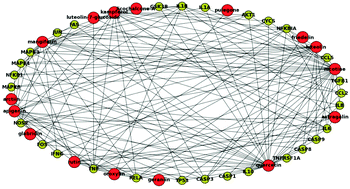Pathway Pattern-based prediction of active drug components and gene targets from H1N1 influenza's treatment with maxingshigan-yinqiaosan formula†
Abstract
Traditional Chinese Medicine (TCM) remedies are composed of different chemical compounds. To understand the underlying pharmacological basis, we need to explore the active components, which function systematically against multiple gene targets to exert efficacy. Predicting active component–gene target interactions could help us decipher the mechanism of action of TCM. Here, we introduce a Pathway Pattern-based method to prioritize the 153 candidate compounds and 7895 associated genes using the extracted Pathway Pattern, which is made up of groups of pathways. The gene prioritization result is compared to previous literature findings to demonstrate the top ranked genes' roles in the pathogenesis of H1N1 influenza. Further, molecular docking is utilized to validate compounds' effects through docking compounds into


 Please wait while we load your content...
Please wait while we load your content...